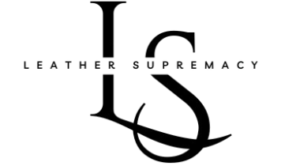Have you ever looked out at a designer bag or leather wallet and wondered how it got such interesting patterns and textures? Leather embossing is how those intricate designs are created, and it’s not natural. Leather embossing is full of creative possibilities—whether you’re adding logos, unique textures or luxurious metallic touches. The types of leather embossing, the tools necessary, and a step-by-step process are all discussed in this article – and some fun facts you’ve never heard of!
What is Leather Embossing?
The process is pretty simple: a design is embossed on leather. It can create top graphics, logos, images, etc. in patterns and text on leather surfaces to give them a distinctive, personalized look. Embossed leather patterns are pressed onto the material with the use of specialized tools, unlike the natural grain patterns you’ll find on untreated leather. It can be a quick, one-time stamp or involve weights pressing into the leather over time for a more permanent effect.
Types of Leather Embossing
Leather embossing has different styles and techniques to produce the looks and feels. Here are the three main types:
Blind Embossing
Blind embossing involves no additional colors or pigments. This is the most subtle kind of embossing, as the patterns are created to blend in fully with the natural color of the leather. The blind embossed system is great for giving texture without affecting the leather’s natural look.
Color Embossing
With color embossing, pigments or dyes are added to the embossed design giving it a pop. The way this style is done is to add a contrast which makes the patterns or logos more noticeable on the leather surface.
Gold Embossing
It’s a luxurious type of leather embossing, using gold leaf. This gold embossing technique, which you would find in most high-cost leather products is used to bring in color as well as texture together.
Popular Styles: Croc and Snake Embossed Leather
Nowadays, croc and snake embossed leathers have become popular because they imitate an exotic animal texture without using actual reptile skins.
Croc Embossed Leather: This leather is embossed with patterns that look like the exclusive scales of the crocodile skin but are made from cowhide or some other non-reptilian sources.
Snake Embossed Leather: It’s similar to croc embossing, except the patterns here are snake-like, giving it a unique look in fashion accessories and footwear.
How to Emboss Leather: A Step-by-Step Guide

Leather embossing is an art and science. Before you can get the best results, you’ll need to meet certain prior conditions. Let’s break down the essentials of embossing leather and how to create professional results:
Key Factors in Leather Embossing
Pressure: The depth and durability of the emboss is determined by the pressure applied to the leather. Patterns are more defined and long-lasting at higher pressures.
Temperature: Embossing is best performed with heated tools since the warmth of the tool softens the leather and keeps the imprint.
Dampness: Moist leather is softer, so it is easier to press into. Before starting to get clearer and sharper patterns, dampen the leather.
The Embossing Process
Prepare the Leather: The first step is to clean the leather surface. This gets moistened lightly to make the embossing process easier.
Select Your Tools: For your design, you choose the stamps or metal plates. Handheld stamps are handy for home use, while automatic embossing machines are used in factories for speed and accuracy.
Apply Pressure and Heat: Use a hot tool with care to press the design gently onto the leather hold for a few seconds to a few minutes, according to the thickness of the material and depth of the design.
Let it Set: Once you embossed, let it cool and dry. As the leather dries the pattern will set more permanently.
Enhancing Results with Chemicals
Better leather embossing can be achieved with chemicals. Sometimes the professionals of leather suggest using water-based solutions like silicone or acrylic compounds to make the designs crisper and long-lasting.
Why Emboss Leather?
The leather embossing doesn’t just make things look pretty, but they do much more than that. Here are some functional benefits of embossing leather:
Hides Imperfections: Generally natural leather hides tend to contain scars, blemishes or inconsistencies. The embossing covers these flaws and gives a smoother more uniform look.
Adds Texture and Dimension: The leather can be embossed in 3D to get a tactile, luxurious feel.
Increases Versatility: Embossing allows leather to look like anything: crocodile, snakeskin, etc. … the options are limitless.
Personalization: Leather has a way of keeping these images embossed on it — logos, monograms, or just unique designs — which makes leather an ideal material for brand identity or a customized gift.
Embossed Leather vs. Printed Leather
Though they may look similar, embossed and printed leather have distinct differences:
Printed Leather: A finishing technique in which designs, colors, or textures are applied with ink or pigment. Leather that has been printed looks far more like a painted or coated surface.
Embossed Leather: Made by pressing patterns right into the leather. A natural, raised or recessed design is given by this method which is often more durable than printing.
Leather Embossing vs. Leather Engraving
While both embossing and engraving can create custom designs on leather, they’re quite different in method:
Embossing: It allows a raised or recessed effect in leather, that does not involve taking or removing any material.
Engraving: Involve removing material permanently, i.e. physically scratching or carving into the leather.
FAQs About Leather Embossing
Here are some quick answers to common questions about leather embossing:
Can Real Leather be Embossed? Yes, real leather can be embossed like faux leather or bonded leather.
How Much Does Leather Embossing Cost? Costs depend on how complex the design is and the tools needed at the time of embossing. An added labor and machinery is included which makes it more expensive than plain leather.
How Can You Take an Embossed Out of Leather? Leather can be partially un-embossed by using a heat gun but with pressure marks it’s difficult to fully erase an embossed design.
What Thickness of Leather Can Be Embossed? Embossing can be done on thin and thick leather, as long as the pressure and the duration are just adjusted accordingly.
In Conclusion
Leather embossing is a superior method for making stunning patterns on plain leather. In addition to making leather more attractive, embossing adds quantifiable value to leather in so many ways. It can be subtle blind embossing, vibrant color embossing or rich gold embossing; each methodology has a special allure that helps leather products stand out from the rest.
If you’re shopping for leather goods, then you’ll now know how to spot it and appreciate the workmanship that goes into it. If you see a beautifully patterned piece of leather the next time, you’ll now know the intricate process behind it, and maybe even be inspired to try embossing leather yourself!




